
An apple juice glaze pairs well with vegetable and meat dishes, especially pork and chicken, as well as desserts. The juice must be cooked down and thickened to create what's known as a reduction. The glaze gets thicker as it reduces so juice that's reduced by half is thinner than juice that's reduced by three-fourths. Though bottles might be labeled specifically "apple juice" or "apple cider," you can use apple cider because it is technically the juice of an apple though usually in its freshest state.
Step 1
Add apple juice to a saucepan or skillet. Use at least twice as much juice as the total volume of glaze you wish to make. Reduce the amount of juice if you want to mix sugar with the juice.
Step 2
Mix brown sugar and your choice of spices with the apple juice, if desired. Though you can make a glaze reduction without sugar, brown sugar makes the glaze sweeter and thicker while adding a bit of a caramel flavor. A good ratio is to use twice as much brown sugar as apple juice. Spices are also optional, but you might want to add cinnamon, nutmeg or even basic black and pepper to increase the flavor profile.
Step 3
Bring the apple juice to a boil over high heat, stirring occasionally.
Step 4
Reduce the heat to simmer over medium-high heat. Simmer until the juice reduces by one-half to three-fourths and thickens to a glaze. Stir frequently to prevent scorching, especially if you add sugar to the apple juice. The amount of time it takes largely depends on the volume of juice and sugar in the pan, generally about six minutes for 3 cups of juice and sugar, but longer if using juice alone.
Related Articles
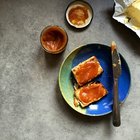
Is Apple Butter Healthy?
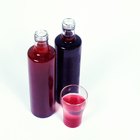
How to Make Sweet Syrup With Fruit Juice

How to Make Chocolate Juice
Ways to Make Tomato Juice Taste Better
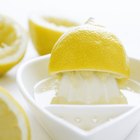
How to Make Lemonade by Boiling the ...

How to Make Liquid Sugar Concentrate

How Long Will Pineapple Juice Stay Good ...

How to Make Carob Juice

How to Substitute Splenda for Sugar
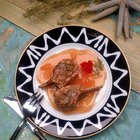
How to Make a Fruit Reduction

How to Cook Agar-Agar Jam

How to Thicken Raspberry Jam With ...
How to Preserve Blackberry Juice in ...

How to Make Plum Sauce

How to Boil Pandan to Make Juice

How to Freeze Raspberries
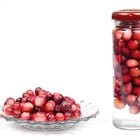
How to Make Cranberry Juice from Fresh ...
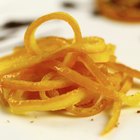
How to Substitute Orange Extract for ...

How to Keep Cucumber Juice Fresh

What Juices Are Good for Healing Acne ...
References
Tips
- While the flavor of apple juice glaze alone is enough to take dishes up a notch, you can make the glaze in the same pan as you cook meat or vegetables to incorporate the bits of flavor stuck on the pan. After removing the meat or vegetables, add a few tablespoons of apple juice to the hot pan and scrape the pan to clean off the stuck-on bits. This process is known as deglazing. Add the remaining juice and any other ingredients.
Writer Bio
A former cake decorator and competitive horticulturist, Amelia Allonsy is most at home in the kitchen or with her hands in the dirt. She received her Bachelor's degree from West Virginia University. Her work has been published in the San Francisco Chronicle and on other websites.
Photo Credits
BananaStock/BananaStock/Getty Images